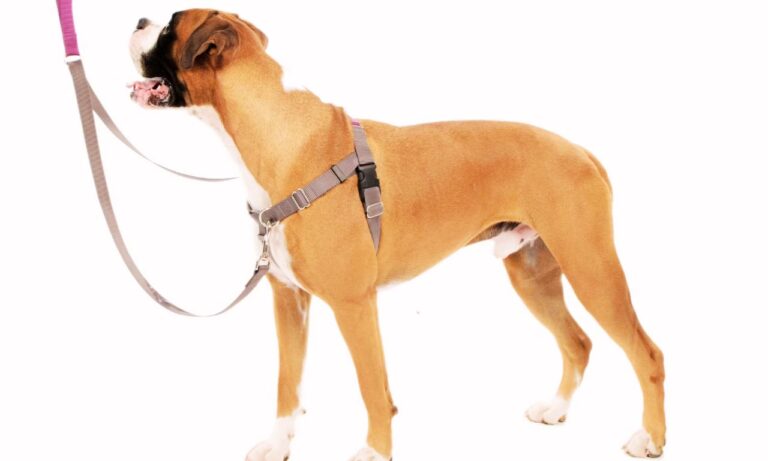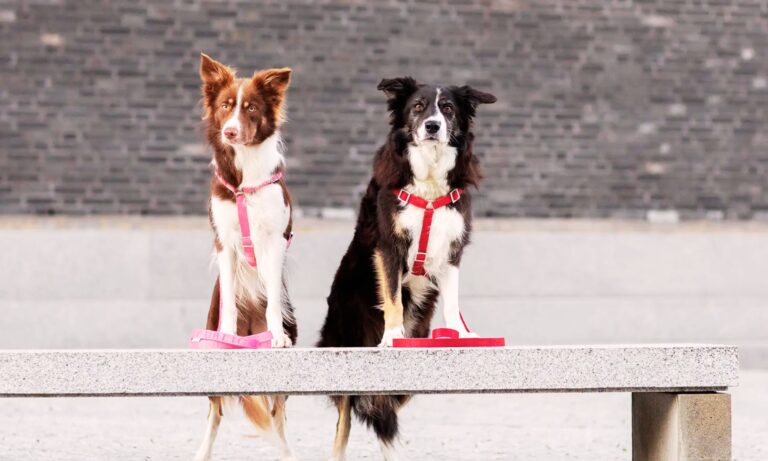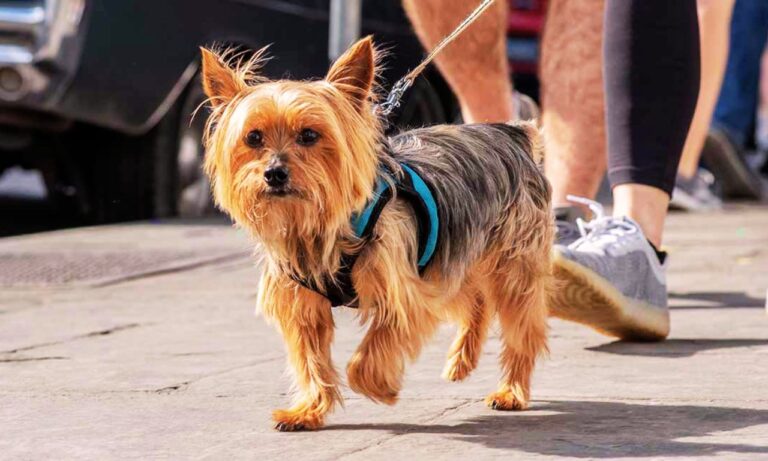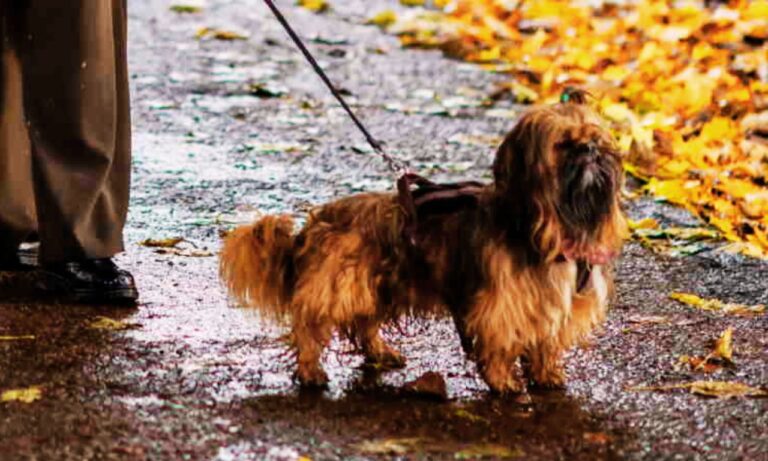Golden Retriever vs Husky are two of the most recognizable, beloved dog breeds globally, yet they couldn’t be more different in their history, temperament, training needs, and even physical build.
While both are medium-to-large dogs with boundless energy and striking good looks, the Golden Retriever is an affectionate, people-pleasing companion, whereas the Siberian Husky is an independent, free-spirited adventurer. Find out what style dog collar is best for hounds to ensure comfort and safety for your furry friend.
Size-wise, the two breeds are surprisingly similar:
- A male Golden Retriever stands around 23–24 inches tall and weighs 65–75 pounds.
- A male Husky stands about 21–23.5 inches tall and weighs 45–60 pounds.
However, the Husky is leaner and more athletic, built for endurance running, while the Golden Retriever is slightly heavier, with a broader frame built for retrieving and carrying game over long distances.
This comprehensive guide will explore every angle — size, temperament, energy levels, grooming, health, and how each breed fits into different lifestyles — to help you decide which breed suits you best.
Blog Highlights
ToggleGrowth Rate: How Fast Do Golden Retriever vs Husky Grow?
Golden Retriever vs Husky both experience rapid growth in their first year but fill out differently.
Goldens gain weight steadily, bulking into their frame, while Huskies often grow tall and gangly first, developing muscle and bulk later.

Average Growth Chart (Male Comparison):
| Age | Golden Retriever (Weight) | Siberian Husky (Weight) | Golden (Height) | Husky (Height) |
| 2 Months | 10–15 lbs | 8–15 lbs | 9–11 in | 8–10 in |
| 4 Months | 25–35 lbs | 18–25 lbs | 14–16 in | 12–14 in |
| 6 Months | 40–50 lbs | 28–40 lbs | 18–20 in | 16–18 in |
| 9 Months | 50–60 lbs | 35–50 lbs | 20–22 in | 18–20 in |
| 1 Year | 60–70 lbs | 40–55 lbs | 22–24 in | 20–23 in |
| Full Grown | 65–75 lbs | 45–60 lbs | 23–24 in | 21–23.5 in |
Note: Females in both breeds tend to be lighter and slightly shorter than males.
Golden Retriever: The Warm-Hearted Athlete
Golden Retrievers were bred in Scotland in the 1800s to retrieve birds and game during hunts.
Their muscular frame, flowing coat, and famously gentle personality have made them one of the top family dogs worldwide.
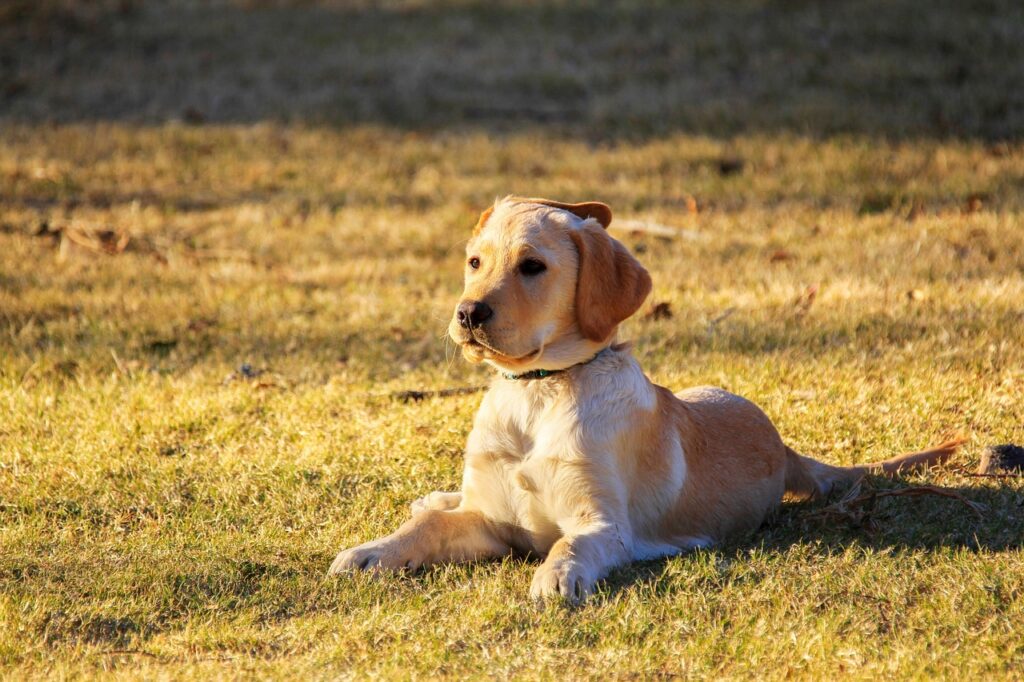
Size Specs
- Adult Male Weight: 65–75 lbs
- Adult Male Height: 23–24 inches
- Adult Female Weight: 55–65 lbs
- Adult Female Height: 21.5–22.5 inches
Body Composition
- Goldens are strong, balanced, and graceful.
- Their broad head, kind eyes, powerful neck, and well-sprung ribs create a symmetrical, athletic dog ready for action or relaxation.
- Golden Retrievers have a straight or slightly wavy waterproof coat with feathering on the legs, chest, and tail, contributing to their signature soft, “angelic” look.
Siberian Husky: The Tireless Nomad
Originally bred by the Chukchi people of Siberia, Huskies are natural endurance athletes built for harsh climates and long distances.
Their physical structure is designed for speed, stamina, and cold-weather survival.

Size Specs
- Adult Male Weight: 45–60 lbs
- Adult Male Height: 21–23.5 inches
- Adult Female Weight: 35–50 lbs
- Adult Female Height: 20–22 inches
Body Composition
- Huskies are compact, light-framed, and extremely efficient movers.
- They possess a thick double coat for insulation, upright ears, a sickle-shaped tail that curls over their back, and a trim, aerodynamic build.
- Unlike Goldens, Huskies appear less bulky but more athletic, built for marathon running rather than strength-based work.
The recommended size collar for an English Cocker Spaniel usually ranges from 12 to 18 inches, providing a snug and comfortable fit for your dog.
Golden Retriever vs Husky Structural Comparison: Frame, Coat, and Movement
| Trait | Golden Retriever | Siberian Husky |
| Frame Type | Sturdy, well-proportioned, muscular | Lean, aerodynamic, athletic |
| Gait | Smooth, flowing, ground-covering stride | Swift, effortless, tireless trot |
| Chest Width | Broad, moderately deep | Narrow, deep enough for stamina |
| Head Shape | Broad, rounded | Slightly rounded, fox-like |
| Tail | Long, flowing feathered tail | Bushy “sickle tail” curled over back |
| Neck | Long, muscular, arched | Medium-length, strong |
Gait and Movement
- Golden Retriever: Moves with a broad, ground-covering stride that looks elegant and fluid, showing strength and grace simultaneously.
- Siberian Husky: Moves with remarkable efficiency, expending minimal energy. Their trot is light, fast, and could continue for hours without tiring — a relic of their sled-pulling ancestors.
Temperament and Personality: Friendliness vs Independence
Temperament can often outweigh size when choosing a breed for your home. Golden Retrievers and Huskies differ dramatically here.
Golden Retriever Temperament:
- Exceptionally friendly toward everyone — family, strangers, children, other pets.
- Highly eager to please; thrives on human interaction and approval.
- Gentle, affectionate, and calm indoors once mature.
- Tends to suffer from separation anxiety if left alone for too long.
Siberian Husky Temperament:
- Friendly but independent — enjoys people but doesn’t live to please them.
- Mischievous, playful, and can be stubborn.
- High prey drive — may not be trustworthy around small animals.
- Extremely social with their own “pack” (humans or other dogs).

For a step-by-step guide on how to wear collar to an Affenpinscher, check out this detailed article to ensure a comfortable and secure fit for your dog.
How Size Influences Training and Exercise Needs
Both breeds need plenty of mental stimulation and exercise, but Huskies, despite being lighter, have much higher endurance demands.
Golden Retriever Training Insights:
- Easy to train using positive reinforcement.
- Early socialization and basic obedience are essential to channel their enthusiasm.
- Moderate energy: needs about 1–2 hours of physical activity daily.
- Enjoys games like fetch, swimming, and obedience sports.

Siberian Husky Training Insights:
- Requires firm, consistent training from an early age.
- Notoriously difficult to train off-leash due to strong wanderlust.
- Very high energy: needs at least 2 hours of rigorous exercise daily (running, hiking, pulling).
- Thrives in structured activities like canicross, bikejoring, and agility.
Coat Care and Grooming: Goldens vs Huskies
Both breeds shed heavily, but their coat types differ significantly.
| Grooming Trait | Golden Retriever | Siberian Husky |
| Coat Type | Long, wavy, waterproof double coat | Medium-length dense double coat |
| Shedding Level | Heavy, especially during spring and fall | Extremely heavy during “blowouts” |
| Brushing Needs | 2–3 times a week | 3–4 times a week |
| Bathing Needs | Every 6–8 weeks | Every 8–10 weeks |
| Grooming Challenge | Matting in feathered areas | Intense seasonal shedding |
Tip: Huskies “blow” their coat twice a year (spring and fall), shedding massive amounts of undercoat within weeks. Golden Retrievers shed moderately year-round, with heavier periods seasonally.
The American Staffordshire Terrier’s coat type is short, sleek, and easy to maintain with regular brushing.
Size, Health, and Life Expectancy
Their body structure and working history influence typical health risks.
Golden Retriever Health Risks:
- Hip and elbow dysplasia
- Heart disease (subvalvular aortic stenosis)
- High risk of cancer (lymphoma, hemangiosarcoma)
- Skin issues and allergies
Average Lifespan: 10–12 years
Siberian Husky Health Risks:
- Hip dysplasia (lower incidence than Goldens)
- Eye issues (cataracts, progressive retinal atrophy)
- Hypothyroidism
- Zinc-responsive dermatosis (a rare skin condition)
Average Lifespan: 12–14 years
Note: Huskies are generally considered one of the healthier purebred breeds with fewer genetic issues compared to Golden Retrievers.
Lifestyle Suitability: Which Breed Fits Your Life?
Choosing between a Golden and a Husky depends heavily on your activity level, living situation, and expectations.
Golden Retriever in the Home:
- Fits perfectly into family life with children, other pets, and guests.
- Thrives in active homes with daily exercise but also loves downtime indoors.
- Needs mental stimulation through training, games, and interactive toys.
- Very adaptable to different environments — city or countryside — with exercise.
Siberian Husky in the Home:
- Best suited for very active individuals or families.
- Requires a secure, escape-proof yard.
- Needs a job: running, pulling, or other endurance activities.
- Not ideal for households with small pets unless raised carefully together.
Final Summary: Golden Retriever vs Siberian Husky — Which Dog is Right for You?
Both Golden Retriever vs Husky breeds bring exceptional joy, but their needs differ greatly.
- The Golden Retriever is the all-around family companion: loyal, affectionate, trainable, and gentle.
- The Siberian Husky is the independent adventurer: athletic, mischievous, energetic, and requiring a strong, committed handler.
Choose a Golden Retriever if you want a steady, affectionate family dog that lives to make you happy.
Choose a Siberian Husky if you crave a playful, high-energy partner who respects independence — and if you love outdoor adventures. To find the perfect fit, learn more about what size collar for a Bichon, ensuring your dog’s comfort and safety.
| Trait | Golden Retriever | Siberian Husky |
| Weight Range | 65–75 lbs (male) | 45–60 lbs (male) |
| Height Range | 23–24 inches | 21–23.5 inches |
| Energy Level | High | Very High |
| Trainability | Very High | Moderate |
| Shedding | Heavy | Extremely Heavy |
| Prey Drive | Low | High |
| Lifespan | 10–12 years | 12–14 years |
Need More Help Choosing or Preparing for Your Dog?
Whether you’re dreaming of a sunny Golden Retriever or an energetic Siberian Husky, we can help with breed-specific training guides, feeding tips, and essential care routines tailored to make your journey smoother!


